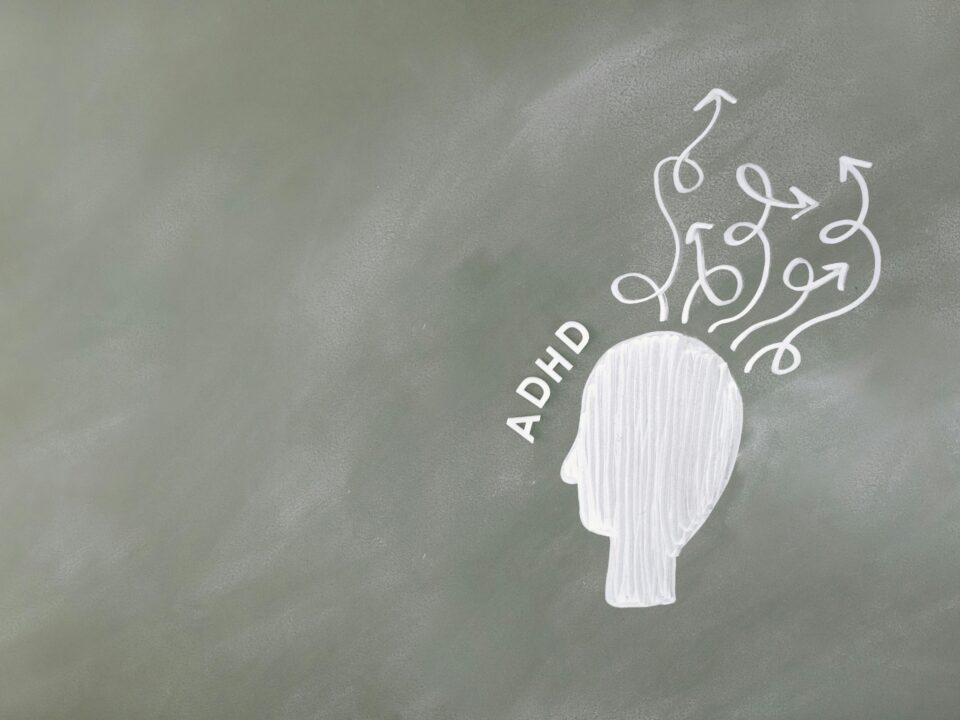ADHD: Zoning Out vs Dissociation

Featured Photo by Tara Winstead via Pexels
Ever ‘wake up’ mid-conversation and realise you haven’t heard the last five minutes? Or feel like the world around you isn’t quite real? When one has a neurodiversity such as ADHD, many symptoms can seem to overlap with other conditions. Common symptoms for people with ADHD are zoning out and disassociation. Zoning out is common for ADHD minds, disassociation is generally associated with dissociative disorders (we will go into the types of dissociative disorders shortly). Whilst these can co-occur, it can be empowering to know the difference to help you better understand yourself.
What is zoning out?
Zoning out, or spacing out, refers to an involuntary lapse of concentration and awareness of one’s surroundings. Whilst this does happen in neurotypical minds, when someone has ADHD it is usually far more challenging to manage. The almost compulsive tendency to zone out, even when doing tasks of high importance, is what differentiates a neurotypical person getting distracted and the zoning out of someone with ADHD. In regards to ADHD, it is almost impossible for the neurodiverse person to control these lapses in concentration (Green, 2025).
What can cause people with ADHD to zone out?
In order to better understand what causes ADHD minds to zone out, we have to explore three structural elements of the human brain’s nervous system: Firstly the dorsal attention network (DAN). This is responsible for goal-driven focus, such as working on an assignment. Secondly, the ventral attention network (VAN). This is responsible for stimulus-driven attention, such as someone calling your name. Lastly, the default mode network (DMN). This is the resting state, activated when there is no need to concentrate on stimuli from the outside world. It is the state in which one imagines, day dreams and ideates.
For a neurotypical brain, these three systems work in a coordinated manner, switching between the three efficiently and maintaining a healthy separation. In an ADHD brain, these systems have a harder time operating separately. This is why the individual may feel as if their brain is buzzing, despite not thinking or doing anything significant. Often for people with ADHD even when trying to concentrate on a task DMN levels remain high, causing involuntary ‘zoning out’, which is really the brain’s nervous system operating in such a way that the gears switch between focus and daydreaming (Green, 2025).
What is dissociation?

Photo By: Kaboompics.com via Pexels
Dissociation generally refers to a trauma or stress response where the mind, in response to triggering stimuli, attempts to ‘escape reality’. This could manifest in a variety of ways. Anything from selective amnesia, to what is most similar to zoning out, depersonalization or derealization.
This is a protective response that occurs when one is exposed to triggering thoughts or external events. These responses commonly cause the person to ‘detach’ from their external environment, potentially feeling as if their outside reality is not real or that they are experiencing their reality not from themselves, as the controller, but from a third person perspective.
This is the brain’s way of trying to shield one from a perceived threat. If you cannot escape the reality of a traumatic memory or event, you can at least feel that it, and by proxy you and your surroundings, are not real. (Green, 2025)
What can cause people with ADHD to dissociate?
The key that links ADHD and dissociation is trauma. Trauma symptoms and ADHD symptoms present very similarly in behaviour; symptoms such as poor impulse control and executive dysfunction.
There is also the separate but contributing factor of actual trauma that is commonly associated with neurodiversity, such as mishandling diagnoses or being treated with contempt for your differences. In fact, research suggests adults with ADHD are around seven times more likely to have PTSD than those without (PTSD UK, 2024) (it is important to point out here that there is no evidence trauma causes ADHD). In turn, the fact that people with ADHD are more likely to experience trauma in their lives means they could often experience dissociation more frequently, in addition to the tendency to ‘space out’.
What are the differences between ADHD and dissociation?

Photo by cottonbro studio via Pexels
As mentioned earlier, people with ADHD are more likely to experience trauma and in turn dissociation. However they do not have ADHD because of the trauma. Therefore it can be concluded that the two conditions have separate diagnostic criteria. Someone with ADHD could have experienced no trauma, and not dissociate at all, but still zone out. Equally, someone without ADHD could experience trauma and dissociation without compulsively zoning out.
What are the different types of dissociative disorder?
The three main types of dissociative disorders are: depersonalisation-derealisation disorder, dissociative amnesia and dissociative identity disorder.
We mentioned depersonalisation-derealisation disorder earlier. Depersonalisation has the effect of making you feel as if you are outside of yourself, observing yourself and your actions from a distance or as a third person.
Derealisation is where one feels as though the outside world isn’t real. People may seem lifeless and many with the condition report everything feeling ‘foggy’
Someone with dissociative amnesia will experience periods of complete blanks in their memories that go beyond normal forgetfulness. They may not be able to remember skills or facts about themselves or their past and find themselves in locations they have no memory of travelling to.
Someone with dissociative identity disorder, previously known as multiple personality disorder, may feel unsure about their own identity. They may feel the presence of other identities within them. Often they will have blank spots in memory. These other identities are known as ‘alters’ and in some cases can assume control of the individual’s mind and body, leaving the host a blank spot in their memory from where the alter stepped in.
There are so many interweaving complexities surrounding dissociative identity disorder that would take a much more in depth article to explain, however I will link some resources for further reading at the bottom of the page. (NHS, 2023 & Mitra et al. 2023)
How can you manage dissociation and zoning out

Photo by Irina Iriser via Pexels
In my opinion, the most important thing is to be kind to yourself, give yourself grace for your differences and learn to work with them as benefits rather than working against them. Neurodiversity and trauma are not conditions we ask to experience, however they are ways we can manage them. (I feel it’s important to note that there can also be positives to being neurodiverse of course.) There are many resources to help with neurodiverse issues on our website, as for dissociation, there is much that can be done to ease symptoms, such as grounding techniques, I have left some links below that I hope will help.
As for practical advice, for zoning out, it is rather out of your control. However you can take measures to make things easier, such as if you are in a meeting having an audio recording device to listen back on rather than taking notes. Or if you have to concentrate for a long period of time on an essay, make sure you plan your time such that you’ve incorporated ‘day-dream time’ into your schedule. Generally having a schedule which includes break times can really help.
Breathing exercises can help with trauma responses such as dissociation (I will link some below) as they help reset the nervous system and keep one in touch with their bodily functions.
Conclusion
To conclude, it is a challenge living with conditions that take you away from the external world. However, that challenge is far from impossible to work with. I also note that people who zone out and day dream can be very creative and utilising that creative energy can also be fulfilling and useful to the individual.
I hope in this article I have equipped you with enough knowledge and tools to take another step in your mental health journey.
Take care of yourself, and remember, you can overcome any challenge.
links:
Breathing Exercises: https://www.torbayandsouthdevon.nhs.uk/services/pain-service/reconnect2life/creating-skills-for-the-future/learning-relaxation-skills/deep-breathing-exercise
More info about Dissociative Identity Disorder (DID):
References
NHS, ‘Dissociative disorders’, 2023 https://www.nhs.uk/mental-health/conditions/dissociative-disorders
Rachael Green, ‘ADHD Symptom Spotlight: Spacing Out’, very well mind, 2025 https://www.verywellmind.com/adhd-symptom-spotlight-spacing-out-6259755
Rachael Green, ‘Dissociation in ADHD’, very well mind, 2025 https://www.verywellmind.com/adhd-symptom-spotlight-dissociation-5270278
PTSD UK, ‘Can PTSD be mistaken for ADHD?’, 2024 https://www.ptsduk.org/can-ptsd-be-mistaken-for-adhd
Paroma Mitra & Ankit Jain, ‘Dissociative Identity Disorder’, National Library of Medicine, 2023 https://www.ncbi.nlm.nih.gov/books/NBK568768



